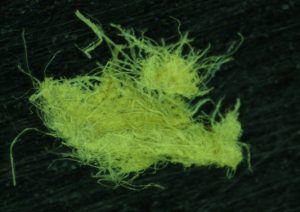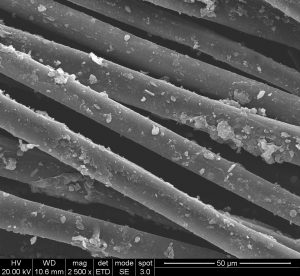Ancient paper, textiles, and dyes
The research deals with the raw materials of textiles in antiquity, from wool and linen in the biblical period to the “textile revolution” in the Middle Ages, with the increased use of silk and cotton. The historical research is based on the archaeological finds and the rabbinic sources and various medieval sources, such as Arab geographers and commercial documents. A follow-up study examined the transition in the Middle Ages from writing on papyrus to the new paper which was based on softening and collecting fibres from scraps of cloth. Later, for the first time, a chemical analysis was made of twenty-one documents from the Cairo Genizah which originated in the Land of Israel of the 11th – 12th centuries. The study, conducted in collaboration with Dr. Azriel Gorsky and Yizhar Neumann, showed that most of the paper was made of cotton and a small amount of linen. These were worn-out clothes used as raw material for paper, which was manufactured in the Land of Israel and reflects the changes in using agriculture crops for the textile industry. An unusual finding is the fiber of rabbit wool that was interwoven with the other fibers. The find is consistent with historical evidence from the time of the Sages and the Middle Ages attesting to a clothing industry which was based also on the use of rabbit wool in the Land of Israel.

Fibers from paper taken from the Cairo Genizah A letter from Jerusalem dated 1025 (enlarged with binoculars)
In addition to historical research on the cultivation of white mulberry trees to feed the domestic silkmoth and the silk textile industry in the Land of Israel in the Middle Ages, the possibility was examined that in the Land of Israel there had previously been an industry of “wild silk. In a pioneering study conducted by Dr. David Iluz and Ayelet Baranes, electron microscopy was used to examine fibers from the 16 pieces of silk fabric found in archaeological excavations in the Land of Israel in the Judean Desert and the Negev, all of which indicate that they were woven of cultivated silk.

Fibers of cultivated silk from a medieval fabric Found in excavations in the Jericho area (enlarged by an electron microscope)
Another study dealt with the identification of Rav Sa’adya Gaon for “שש” or “בוץ” that was used for the Kohen’s garments, which he thought was not made of flax, but of fibers from the פתילת המדבר Calotropis procera (Sodom apple). Historical research has shown that in his time, an industry for such expensive fabrics was known. In collaboration with Ms. Toni Friedman, fabric was reconstructed from fibers produced from the Calotropis procera grown in the Jordan Valley today.
Another research project on the “meshi ha-yam” mentioned in the literature of the Sages – production of a delicate and precious silk from a giant marine mollusk called Pinna nobilis. The last remnant of this ancient tradition was recorded on the island of St. Atiochio near Sardinia.
As part of the study of ancient textiles, we began to specialize in the research of the ancient dyes of the Land of Israel in view of historical research and the practical renactment of dyeing techniques. Dr. David Iluz contributed from his experience to advancing the chemical research and thus we identified the remains of Indigo in an industrial facility in Ein Bokek and the Land of Israel kermes shell insect that produces the shani [scarlet dye]. Later, a research team was set up that specializes in using HPLC for identification of dyes found in Land of Israel ancient textiles. The team consists of Naama Sukenik of the Israel Antiquities Authority, Dr. David Iluz and Alex Vervak of the Faculty of Life Sciences at Bar-Ilan University. To date, hundreds of textiles have been examined from various sites in the Negev, the Arava, and the Judean Desert caves. Among the most prominent finds are ancient red dyes of the Iron Age from the madder plant, evidence of the use of the Argamon murex and shell insects for dye (tolaat shani) in the Roman period. Likewise, evidence was found of the phenomenon of green textiles, which were popular at the time and were created by a double dyeing method using blue and yellow pigments.
